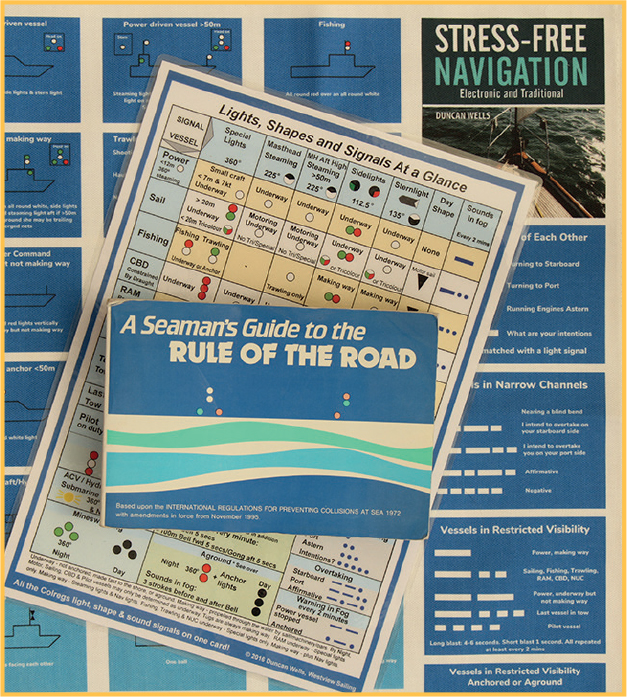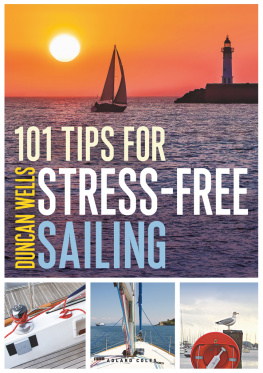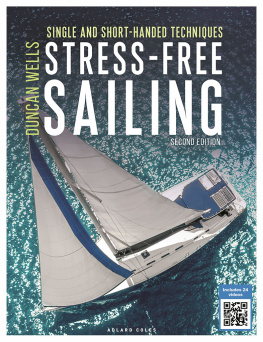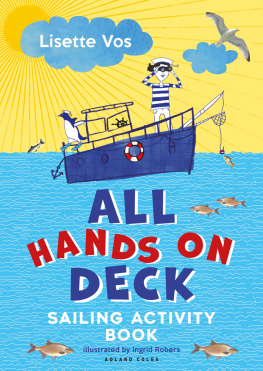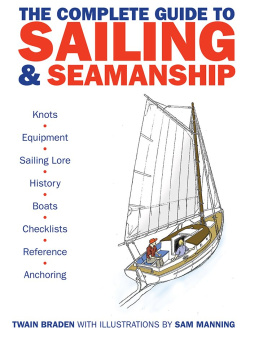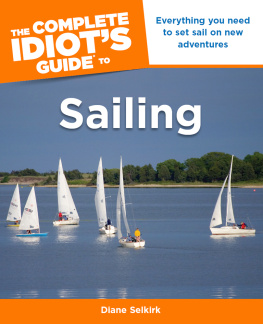

Thanks to James Littlewood for his invaluable contribution in casting a cool eye over the Tips and advising accordingly.
ADLARD COLES
Bloomsbury Publishing Plc
50 Bedford Square, London, WC1B 3DP, UK
29 Earlsfort Terrace, Dublin 2, Ireland
This electronic edition published in 2021 by Bloomsbury Publishing Plc
BLOOMSBURY, ADLARD COLES and the Adlard Coles logo are trademarks of Bloomsbury Publishing Plc
First published in 2021
Copyright Duncan Wells, 2021
Illustrations Dave Saunders, 2021
British Crown Copyright, 2021
All photos taken by Duncan Wells or on his behalf unless otherwise stated.
Duncan Wells has asserted his right under the Copyright, Designs and Patents Act, 1988, to be identified as Author of this work
All rights reserved
You may not copy, distribute, transmit, reproduce or otherwise make available this publication (or any part of it) in any form, or by any means (including without limitation electronic, digital, optical, mechanical, photocopying, printing, recording or otherwise), without the prior written permission of the publisher. Any person who does any unauthorised act in relation to this publication may be liable to criminal prosecution and civil claims for damages.
This product has been derived in part from material obtained from the UK Hydrographic Office with the permission of the UK Hydrographic Office and Her Majesty's Stationery Office.
THIS PRODUCT IS NOT TO BE USED FOR NAVIGATION
NOTICE: The UK Hydrographic Office (UKHO) and its licensors make no warranties or representations, express of implied, with respect to this product. The UKHO and its licensors have not verified the information within this product or quality assured.
Bloomsbury Publishing Plc does not have any control over, or responsibility for, any third-party websites referred to or in this book. All internet addresses given in this book were correct at the time of going to press. The author and publisher regret any inconvenience caused if addresses have changed or sites have ceased to exist, but can accept no responsibility for any such changes
The publishers and author accept no responsibility for any errors or omissions, or for any accident, loss or damage (including without limitation any direct, consequential, special or exemplary damages) arising from the use or misuse of, or reliance upon, the information contained in this book.
A catalogue record for this book is available from the British Library
Library of Congress Cataloguing-in-Publication data has been applied for
ISBN: 978-1-4729-8200-1 (PB)
ISBN: 978-1-4729-8201-8 (eBook)
ISBN: 978-1-4729-8202-5 (ePDF)
To find out more about our authors and their books please visit www.bloomsbury.com where you will find extracts, author interviews and details of forthcoming events, and to be the first to hear about latest releases and special offers, sign up for our newsletters.
CONTENTS
Here are some of the tips and tricks that I have discovered during my boating life. Most of them are a result of errors I have made and hopefully learned from. The key, of course, is trying not to make the same mistakes over and over again!
You will see that I have included some techniques for casting off and coming alongside. It is absolutely key to an enjoyable boating experience that we take off in style, without drama, and that we return in style, without drama and using my robust techniques, that is exactly what you will do. They make the difference between a happy crew and a skipper who has lost his crew because he shouted once too often because he wasnt confident when mooring the boat and was making a mess of it. With my techniques and the crew fully involved, or indeed managed single-handedly, mooring will be a breeze!
I have also added in a couple of tips about the weather, because knowing what the weather will do when we are out there is key. For some reason, understanding weather is always a big issue with my students, both Yachtmaster and Day Skipper, and so a few hints wont go amiss.
I hope you find these tips useful and that they go some way to making your boating stress-free.
The first rule of good seamanship is:
Try to avoid situations that require good seamanship.
Actually, that sounds a bit glib. A skipper needs to be on top of everything:
state of the wind, tide and sea
visibility
traffic density
navigational hazards
depth of water
weather forecast
welfare of the crew
motivation of the crew
the boat
the sail plan
the navigation
where the next problem could come from
The more you can keep on top of all these things, the less likely you are to find yourself in a situation that tests your seamanship.
The second rule is:
Always run with a sail plan that can be managed by the crew available in the anticipated conditions and that can be reefed easily and quickly.

The classic yawl Lutine, trimmed to perfection.
STAND ON OR GIVE WAY:
FOLLOW THE RULE OF THE ROAD |
There is no such thing in the collision regulations as right of way. You will hear people mention it, but it does not exist.
In the collision regulations (International Regulations for Preventing Collisions at Sea/ COLREGS), we have:
Stand on vessels and
Give way vessels.
And you need to know when to stand on and when to give way.
But you must remember that even if you are the stand on vessel, if you see that the give way vessel is not giving way then you must take such action as will best avoid a collision.
It is essential when navigating in crowded waters alongside commercial shipping that you know the regulations and what will be expected of you.
And while we are at it:
Every vessel shall at all times maintain a proper look-out by sight and hearing as well as by all available means appropriate in the prevailing circumstances and conditions so as to make a full appraisal of the situation and the risk of collision.

And this paragraph in the COLREGS is followed by:
Every vessel shall at all times proceed at a safe speed so that she can take proper and effective action to avoid a collision and be stopped within a distance appropriate to the prevailing circumstances and conditions.
Remember that near bridges and bends, the boat heading downstream is the stand on boat. Boats heading upstream must give way.
Its logical, really, as a boat heading upstream has more control.
Other than that, all the other COLREGS rules apply.

A well-known bridge on the River Thames. James Littlewood
